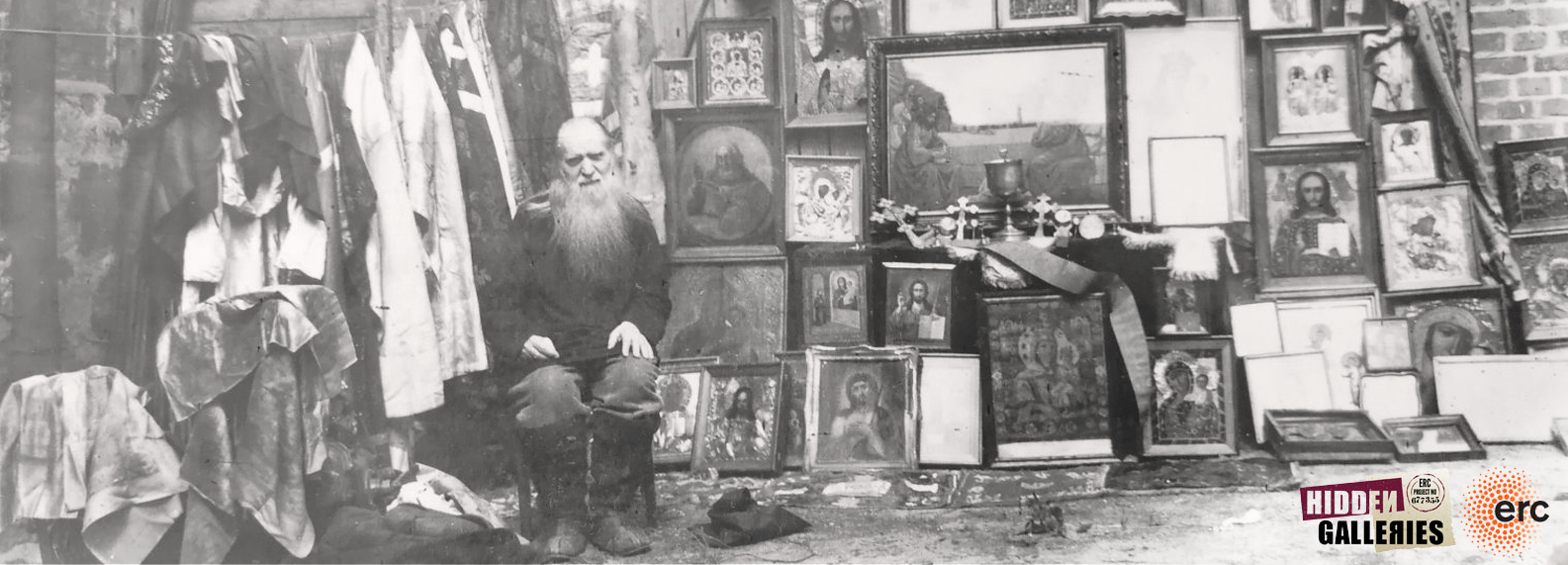Women and Orthodox Dissent
Item set
Title
Women and Orthodox Dissent
Description
Women often played an important and visible role within Orthodox Christian dissent movements. Even though they were often portrayed as vulnerable and the main victims of religious leaders, some archival sources present them as key leaders, proselytisers (or propagandists in the language of the secret police), providers of religious items, such as icons and prayer books, as well as staunch defenders of their belief system. In some communities it was not unusual for women to take on the role of a priest, especially when male leaders were absent, and preside over religious services for the community. In challenging the gender norms of contemporary society (many groups also encouraged sexual abstinence and the rejection of marriage), women were often accused in Orthodox Church journals such as Luminatorul and Misionarul, the state authorities and the press of being sexually promiscuous and of being the concubines of male charismatic leaders.
Many women suffered detention, imprisonment and deportation as well as sickness and extreme hardships under both rightwing and leftwing dictatorships.
For further readings see:
“Drumul rectilin al bisericii românești” in Biserica și Școala, No.15, 11 April, 1937, p.128.
“Descoperiri în legătură cu activitatea stiliștilor din Piatra Neamț” in Credința, 7 October, 1936.
Pr. D. Croitoru, “Pericolul stilismului și inochentismului din Basarabia” in Misionarul, No. 1-2, January- February 1936, p. 120.
Grigore Spiru, “Rasputinul Moldovei”, 1936- anti-Stilist propaganda brochure printed with the approval of the Iași Metropolitan Church.
Many women suffered detention, imprisonment and deportation as well as sickness and extreme hardships under both rightwing and leftwing dictatorships.
For further readings see:
“Drumul rectilin al bisericii românești” in Biserica și Școala, No.15, 11 April, 1937, p.128.
“Descoperiri în legătură cu activitatea stiliștilor din Piatra Neamț” in Credința, 7 October, 1936.
Pr. D. Croitoru, “Pericolul stilismului și inochentismului din Basarabia” in Misionarul, No. 1-2, January- February 1936, p. 120.
Grigore Spiru, “Rasputinul Moldovei”, 1936- anti-Stilist propaganda brochure printed with the approval of the Iași Metropolitan Church.
Creator
Iuliana Cindrea
Publisher
This project has received funding from the European Research Council (ERC) under the European Union’s Horizon 2020 research and innovation programme No . 677355
Bibliographic Citation
Iuliana Cindrea, "Women and Orthodox Dissent"
Date Created
2019
Items
-
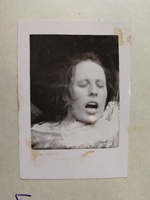
Resistance by Image: Arrest Photographs of True Orthodox believers, Ukraine 1952
These arrest photographs come from a 1952 secret police penal file on a group of 23 believers who were arrested in the Kiev region of Ukraine. The file contains two versions of their arrest photographs taken by the MGB officers. As the photos were being taken, the believers intentionally closed their eyes, turned their heads away, or sang while the officers tried to restrain them. Their gloved hands are clearly visible in the images. Police officers later tried to correct these “tainted” photographs by removing the evidence of their violent intervention from the prints, which one can see in th -

Handwritten songbook belonging to nun Olimpiada Petreanu 1940
These images show a church songbook that was carefully handwritten by nun Olimpiada Petreanu sometime in 1940. The first image depicts the cover of the songbook. It conveys important information such as the owner of the songbook, the fact that it was a church songbook, “cântări bisericești”, and, in faded letters, the year when the songbook was written. The second and the third images show a small part of the content of the songbook, namely the so-called “canon of the soul”, which was dedicated to the Virgin Mary, and the Akatist of Jesus Christ. These are both important hymns and hymnal ele -
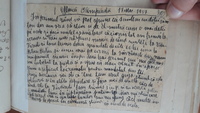
Postcard sent to nun Olimpiada Petreanu whilst in monastic incarceration
These images show the front and reverse of a postcard that was sent to nun Olimpiada Petreanu by her brother whilst she was incarcerated at Vărzărești Monastery. The postcard is of particular interest as it mentions the difficulties that the families of imprisoned Old Calendarist nuns encountered in their efforts to contact them. The first image shows the front of the postcard and contains references to one of the most important issues that the nuns and their families experienced. One of the constant complaints of the nuns, as well as of their families, was that the postcards, letters and pac -
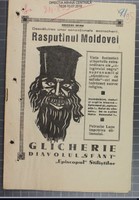
Brochure combating Old Calendarist ideas Romania
These four images are part of a brochure written in or around 1936 by Grigore Spiru, a well known Romanian journalist of the interwar period. The brochure, whose main characters are Glicherie Tănase and his alleged mistress, Maria Gârleanu, was meant to combat Old Calendarist ideas and to portray the Stilists (referring to "old style"), as Old Calendarists were referred to, in a negative manner. The first picture depicts the cover of the brochure, entitled “The Rasputin of Moldova. Glicherie, the holy devil and the Stilist bishop”, as well as a caricature of Glicherie. The comparison with th -

Postcard sent from detention by Romanian Old Calendarist nun
These images show a postcard sent by an Old Calendarist nun to her family whilst in detention. It is a particularly sensitive letter as it conveys the struggles of the nun who appears to have been rejected by her parents for reasons that are not clear from the information we have. The first image shows the face of the postcard and it contains references to the sufferings that the nun had endured for the last two years. From the message that she wrote to her parents, she seems to accuse them of having forgotten about her during these hardships and she reminds them that she is still their daugh -
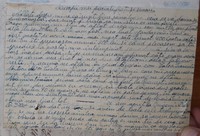
Confiscated postcard written by Romanian Old Calendarist nun
These images show a postcard sent by an Old Calendarist nun to her family in which she describes how she was arrested and sent to an Orthodox Monastery. The postcard was confiscated and attached to a file that contains many such postcards. They all date from approximately same period of time between 1936 and 1937. The first image represents the face of the postcard and includes important details about the fate of the nun. She describes to her family how she was arrested, where she was taken and what the conditions at the Monastery were like. Arrested by the Gendarmes on her way to the post of -
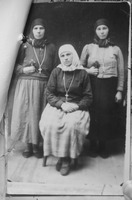
Confiscated photographs of Archangelists Moldova
These confiscated photographs come from a 1938 Military Court file from Romanian Bessarabia (today’s Republic of Moldova). On the 25th August 1938, a house search was conducted of the home of Vladimir Draguțan in the village of Recea, county Lăpușna. Amongst the items “used for Inochentist propaganda” discovered at Vlademir’s home were a number of religious booklets, devotional images of Alexandru Culeac, the founder of the movement, and Inochentie of Balta, a number of small crosses and several photographs of the community. The first image shows three women one of whom is named in the case f -
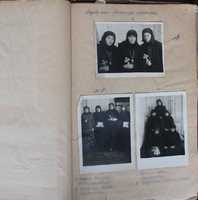
Confiscated photographs of Archangelist women Moldova
This page from an MGB investigation file from 1947 from Soviet Moldavia shows three images of women preachers from the Archangelist movement, a branch of Inochentism. The first image portrays the women holding crosses in their right hand, facing the camera and cut off at waist height. The composition and symbolism of this image reproduce the visual language of icons. Images of this kind could offend the sensibilities of Orthodox believers. The two lower images carry the same imagery but in a less obvious way. The women are dressed conservatively in dark clothes that are inspired by monastic dr -
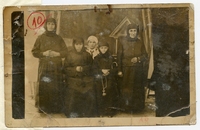
Confiscated photograph of Old Calendarist nuns Romania
This photograph was confiscated in 1941 by the Siguranța, the Romanian secret police prior to Communism. It depicts four Old Calendarist nuns, also referred to as Stilists. A short handwritten text on the reverse states that it was taken on September 1st, 1939. The nuns are dressed in standard monastic clothes, their heads are covered and their black tunics entirely cover their bodies. In their hands, they hold “metaniere”, Eastern Orthodox prayer ropes. The “metaniera” is an important part of monastic dress and is used during prayer to aid concentration. The composition of the photograph and
